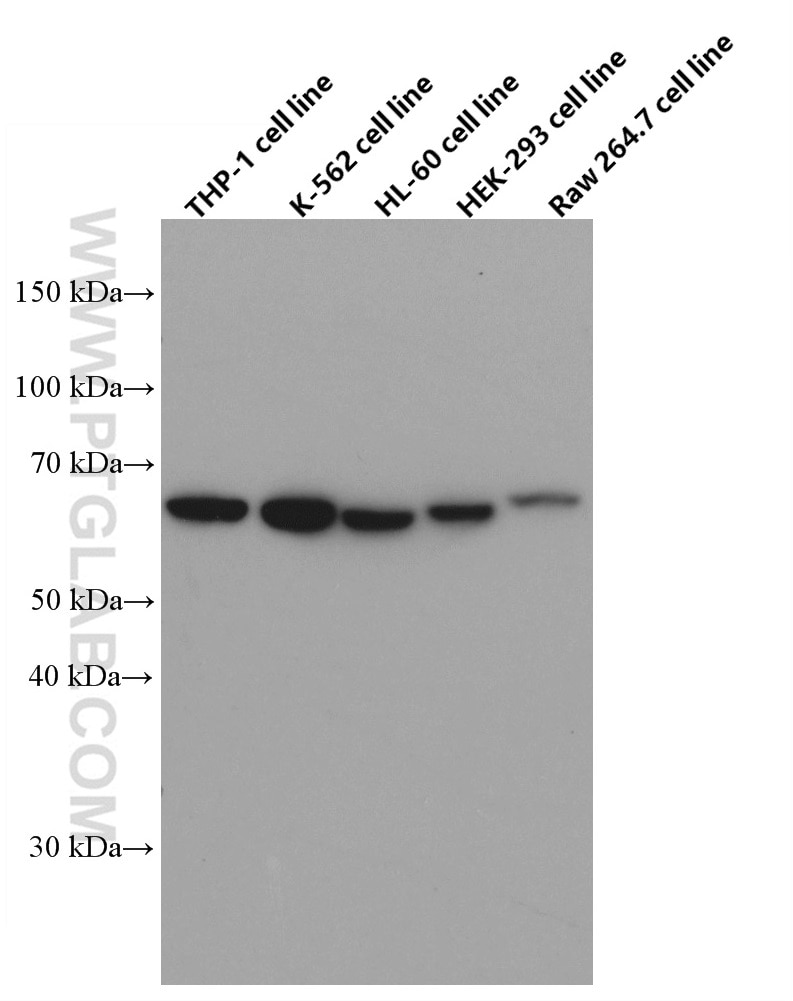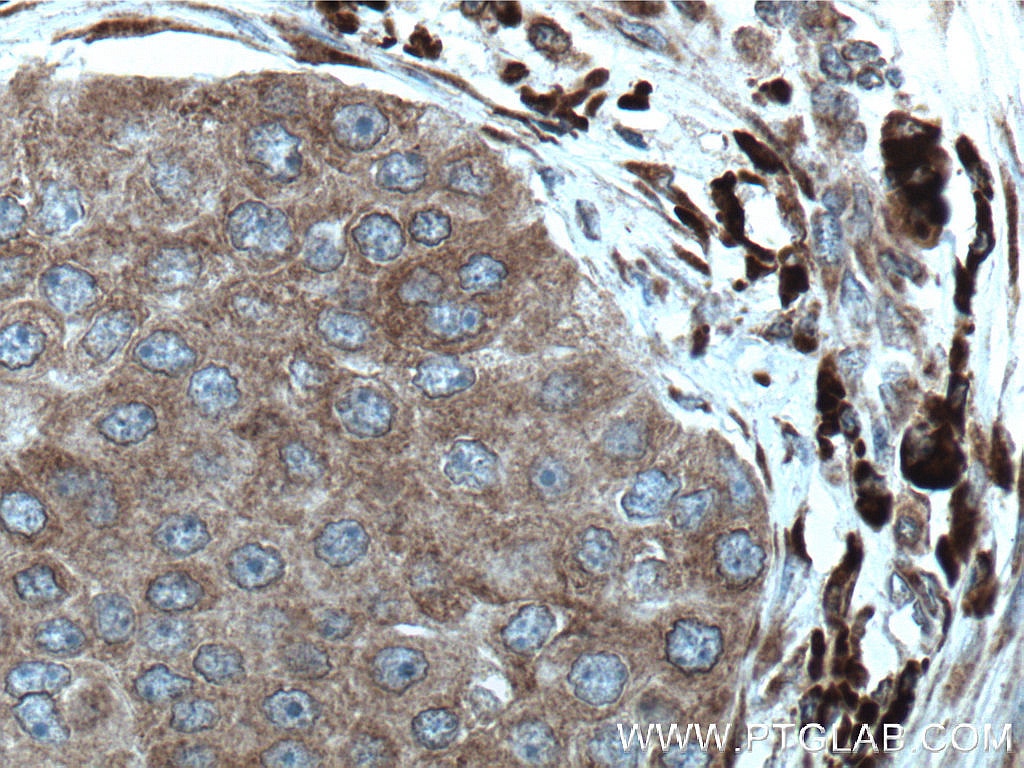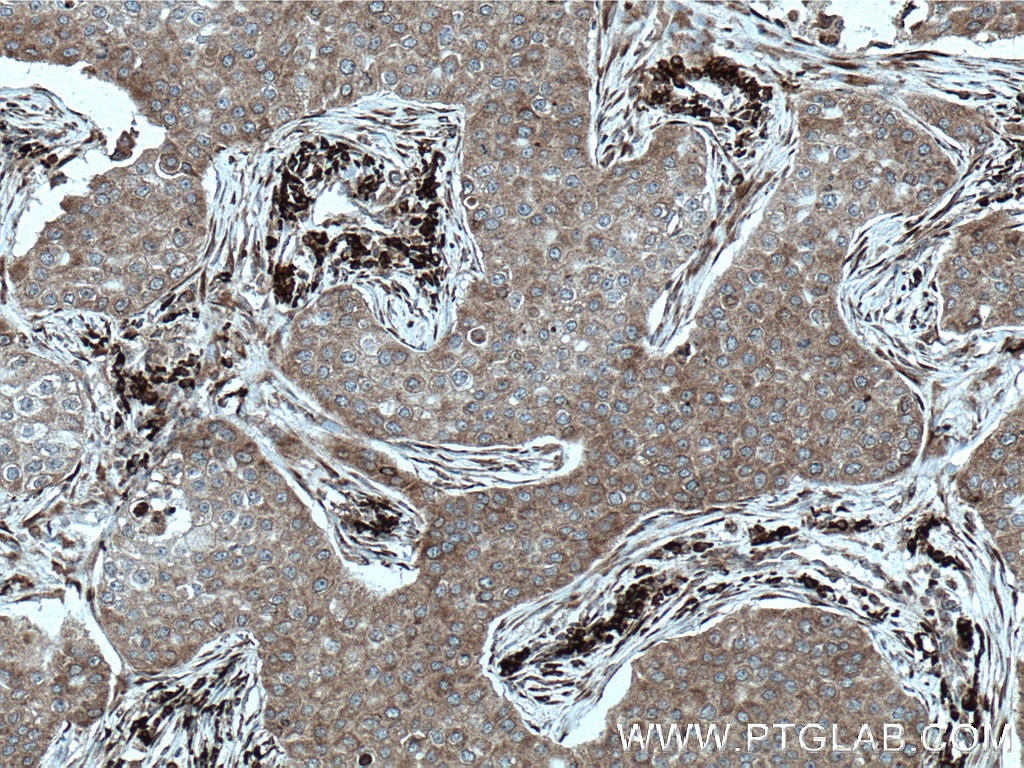Product Information
66581-1-PBS targets STT3A in WB, IHC, Indirect ELISA applications and shows reactivity with human, mouse, rat samples.
| Tested Reactivity | human, mouse, rat |
| Host / Isotype | Mouse / IgG1 |
| Class | Monoclonal |
| Type | Antibody |
| Immunogen | STT3A fusion protein Ag27072 Predict reactive species |
| Full Name | STT3, subunit of the oligosaccharyltransferase complex, homolog A (S. cerevisiae) |
| Calculated Molecular Weight | 705 aa, 81 kDa |
| Observed Molecular Weight | 65 kDa |
| GenBank Accession Number | BC020965 |
| Gene Symbol | STT3A |
| Gene ID (NCBI) | 3703 |
| RRID | AB_2881941 |
| Conjugate | Unconjugated |
| Form | Liquid |
| Purification Method | Protein G purification |
| UNIPROT ID | P46977 |
| Storage Buffer | PBS only, pH 7.3. |
| Storage Conditions | Store at -80°C. |
Background Information
STT3A, also named as Integral membrane protein 1, belongs to the STT3 family. STT3A is expressed at high levels in placenta, liver, muscle and pancreas, and at very low levels in brain, lung and kidney. STT3A is a catalytic subunit of the N-oligosaccharyl transferase (OST) complex which catalyzes the transfer of a high mannose oligosaccharide from a lipid-linked oligosaccharide donor to an asparagine residue within an Asn-X-Ser/Thr consensus motif in nascent polypeptide chains. STT3A is present in the majority of OST complexes and mediates cotranslational N-glycosylation of most sites on target proteins, while STT3B-containing complexes are required for efficient post-translational glycosylation and mediate glycosylation of sites that have been skipped by STT3A. There are two isoforms of STT3A with molecular weight of 81 and 70 kDa. 66581-1-Ig antibody detects a protein around 65-70 kDa in SDS-PAGE which is similar to papers published. (PMID: 32005703, 25135935)







